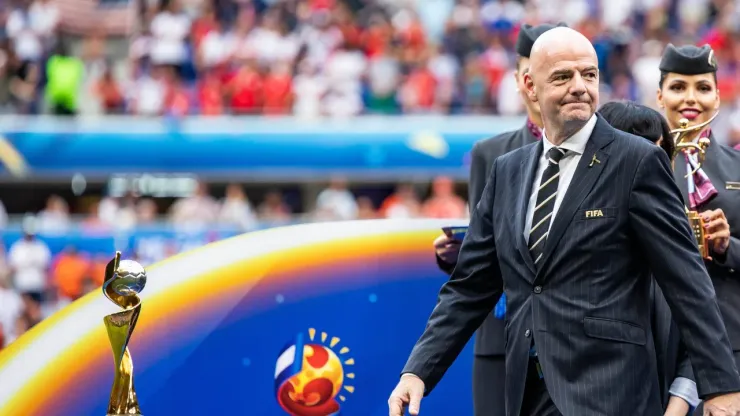The Women’s World Cup is right around the corner. As of May 31, the 50-day countdown to the tournament in Australia and New Zealand is underway. The record number of 32 teams secured their spots in the group stage, and teams are beginning to narrow down their squads for the competition. Tickets are selling at a record pace, and that could lead to over 1.5 million tickets sold.
Also, in the United States, FOX is beginning to nail down its coverage. As of now, that includes the likes of Carli Lloyd. She returns as an analyst to serve the same responsibilities for the 2022 World Cup in Qatar.
However, the consistent issues regarding broadcasts of the Women’s World Cup, particularly in Europe, continue to plague the anticipation of the tournament. England, Germany, Spain and France are all among the favorites to win the tournament. Moreover, the Netherlands was the runner-up in 2019, and Italy is making an appearance for the second-straight year, which is far better than the men can say.
Even though FIFA continues to promote the event across the globe, anticipation is stalling in Europe. Much of that stems from broadcast rights. For example, The Telegraph is reporting FIFA’s frustration with Italy offering broadcast rights at 1% of the cost of the men’s rights. In Germany, the proposed deal is less than 3% of what the men’s World Cup cost in the country.
Germany’s instance is particularly interesting. FIFA noted that the Women’s Euro Final last summer was the most-watched sporting event in Germany in 2022. That game featured England and Germany battling at Wembley. That audience peaked at 21.8 million viewers in Germany. That is more than any match in the 2022 men’s World Cup for German audiences.
Infantino calls lack of Women’s World Cup deals a ‘slap’
FIFA President Gianni Infantino lamented these lowball offers from broadcasters. He called them a ‘slap in the face’ to both the athletes at the Women’s World Cup and women’s soccer. As a counter, he threatened to blackout broadcasts of the tournament in the traditional ‘big five’ countries in Europe.
There is still time for these broadcast deals to smooth over. Sport officials in England, France, Spain, Italy and Germany believe coverage of the tournament is pivotal. It can continue the already impressive growth of the women’s game in Europe.
“We are convinced that the media coverage of the Women’s World Cup will be decisive in improving the global visibility of women’s sports in our European countries,” the countries wrote in a joint statement. “Media exposure to women’s sports has indeed a highly significant impact on the development of women’s and young girls’ sports practices.”
Regardless, with 50 days left until the tournament, time continues to wane on the potential broadcasting success of the Women’s World Cup in Europe.
PHOTO: IMAGO / ZUMA Wire
Guide to World Cup 2023
200+ Channels With Sports & News
- Starting price: $33/mo. for fubo Latino Package
- Watch Premier League, Women’s World Cup, Euro 2024 & Gold Cup
The New Home of MLS
- Price: $14.99/mo. for MLS Season Pass
- Watch every MLS game including playoffs & Leagues Cup
Many Sports & ESPN Originals
- Price: $10.99/mo. (or get ESPN+, Hulu & Disney+ for $14.99/mo.)
- Features Bundesliga, LaLiga, Championship, & FA Cup
2,000+ soccer games per year
- Price: $5.99/mo
- Features Champions League, Serie A, Europa League & Brasileirāo
175 Premier League Games & PL TV
- Starting price: $5.99/mo. for Peacock Premium
- Watch 175 exclusive EPL games per season






